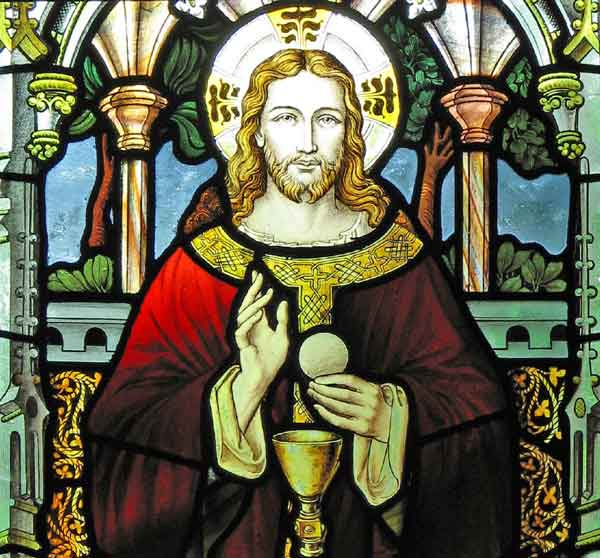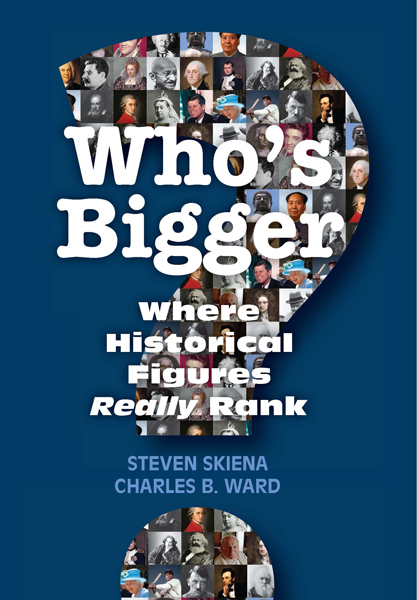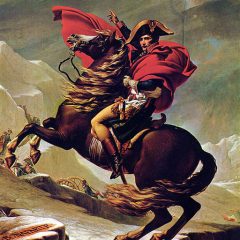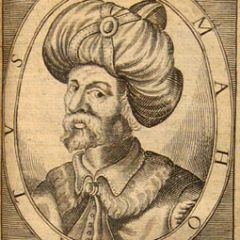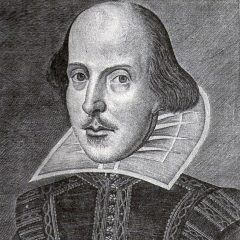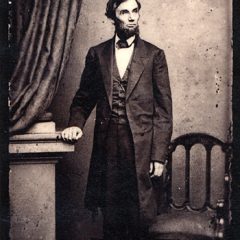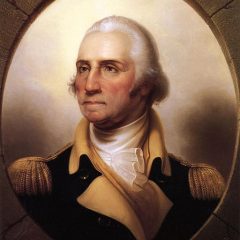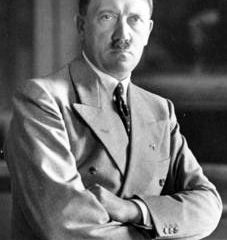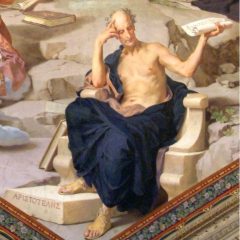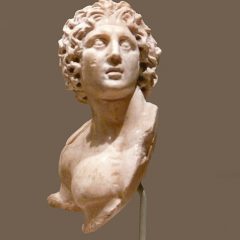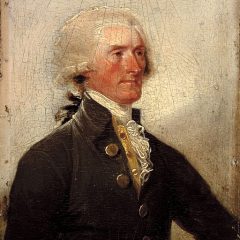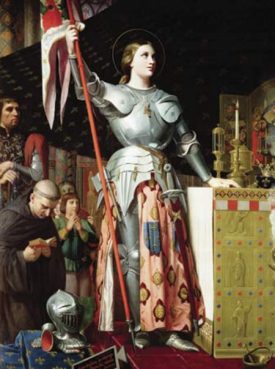(RNS) He’s a man with a ton of titles — Prince of Peace, Son of God, Shepherd of Souls — but now Jesus has one more: the biggest name in human history. Ever.
So say the authors of a startling new book, “Who’s Bigger: Where Historical Figures Really Rank,” which tries to settle, once and for all, the question of who’s who.
It’s a work of “culturometrics,” a fancy term to describe quantitative data analysis applied to individuals in society the same way Sabermetrics tracks performance in baseball, pundits aggregate polls in elections, and algorithms rule computer search engines.
“Bigger” is a complex collection of lists and rankings, but none is more provocative than its Top 100: Jesus is No. 1, Adolf Hitler is No. 7, everyone is overwhelmingly white and 97 are male.
But keep your blood pressure in check. “Bigger does not mean better,” said co-author Steven Skiena, a computer science professor at Stony Brook University where he heads the Data Science Laboratory.

Left, Steven Skiena photo courtesy Stony Brook University, right, Charles B. Ward photo Stony Brook University
To research “Bigger,” Skiena and Charles Ward, an engineer on the ranking team at Google, created a complex amalgam of measures. To establish their “significance” ranking, they assessed more than 800,000 names, calculated scores of celebrity and achievement or gravitas and then factored in how long, and how long ago, someone lived.
Hence the Top 10 names need no introduction:
1. Jesus
2. Napoleon
3. Muhammad
4. William Shakespeare
5. Abraham Lincoln
6. George Washington
7. Adolf Hitler
8. Aristotle
9. Alexander the Great
10. Thomas Jefferson
- 1. Jesus – Original digital illustration of Jesus Christ of Nazareth.
- 2. Napoleon Bonaparte – crossing the Alps.
- 3. Muslim Prophet Muhammad
- 4. William Shakespeare
- 5. Abraham Lincoln posed for this standing portrait in 1863.
- 6. George Washington painting circa 1850
- The Associated Press rejects a historian’s claim that it collaborated to with the Nazis to gloss over Adolf Hitler’s genocidal attacks on Jews in 1941.
- 8. Aristotle appears in a wall painting in Rome.
- 9. Egyptian alabaster statuette of Alexander the Great in the Brooklyn Museum, reportedly from Egypt.
- 10. White House copy of the 1788 Thomas Jefferson painting.
Where things get really curious is moving down the list:
— Protestant reformer Martin Luther (No. 17) is just above Soviet dictator Joseph Stalin.
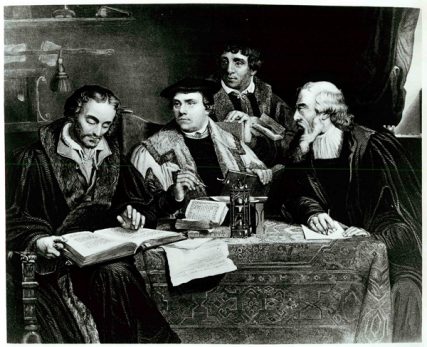
Reformer Martin Luther (center) works closely with several colleagues in translating the first German-language edition of the Bible. Engraving by J.C. Buttre. He was listed No. 17 in a new ranking of historical figures. Religion News Service file photo
— Elvis Presley (No. 69) is notched between Socrates and William the Conqueror.
— King Arthur (No. 85), who may be a myth, tops Michelangelo.
— Only Queen Elizabeth I (No. 13), Queen Victoria (No. 16), and St. Joan of Arc (No. 95) make the Top 100; whether the list includes anyone who is black depends on how you classify St. Augustine of Hippo (No. 72), the North African/Roman theologian of the early Christian church.
— President Obama barely missed the top 100, coming in at No. 111, but ahead of the Virgin Mary (No. 127).
Researchers say there was no nefarious plot to exclude women and blacks. But in centuries past, those two groups were barred from historically significant roles, their social contributions unrecorded by others.
Today, to get a high ranking in Wikipedia, with long entries, frequent edits and numerous links to other important people and events, a woman has to be so much stronger than a man, “it’s like they have to be four IQ points higher,” said Skiena.
Wikipedia and Google ngrams (a searchable collection of words in scanned English language books) are the basis of the “Bigger” research — and also the source of its bias toward the Anglo-American, English-language version of history in books and online. Relying on Wikipedia, where only 15 percent of editors are women and user-generated data can be riddled with errors, is also a risky choice, critics have noted.
This methodology also crimped the authors’ ability, for example, to rank the Dalai Lama. The current leader of Tibetan Buddhism was often listed by his official title, the 14th Dalai Lama, which is a status, not an individual, in the data. That meant his ranking couldn’t be calculated.
For the researchers, significance is not a value judgment. The authors examined people’s reputations as memes that evolve across time, said Skiena. They traced the evolution of the term “meme” to famed evolutionary zoologist and outspoken atheist Richard Dawkins (No. 1,630 in their top 2,000).
“We measured how successfully they are propagating their meme through the course of history,” said Skiena.
Jesus is the indisputable leader, with his name appearing once in every 10,000 words in the ngrams.

Confucius presenting the young Gautama Buddha to Laozi. Gautama Buddha was listed No. 52 in a new ranking of historical figures.
Likewise, founders of religions are highly significant people. Skiena noted that could decrease across time as the proportion of writing in English is no longer focused primarily on faith or philosophy, as it was in ancient days.
But there may yet be more popes in the Top 100 one day than just the two listed currently — St. Peter (No. 65) and Pope John Paul II (No. 91) — because contemporary popes are living longer than their predecessors.
Other religious figures in the top 100:
34. Paul the Apostle (New Testament author, missionary)
52. Gautama Buddha (central figure of Buddhism)
57. Joseph Smith (founder of Mormonism)
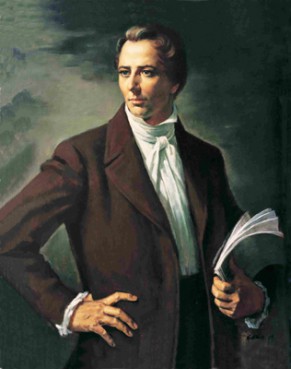
(RNS) Joseph Smith founded the Mormon faith. He was listed No. 57 in a new ranking of historical figures. RNS file photo courtesy of the Museum of Church History and Art/The Church of Jesus Christ of Latter-day Saints.
89. Ali (son-in-law of Islam’s Prophet Muhammad)
90. St. Thomas Aquinas (Catholic theologian)
99. John Calvin (Protestant theologian)
Wish the list were different? Their “Who’s Bigger” app for Apple iPhone and iPad allows people to compare their own choices with those of Skiena and Ward.
But neither Pope Francis, Time magazine’s Person of the Year for 2013, nor Miley Cyrus, a Time finalist, will top the charts. His election and her twerking episode both grabbed headlines after the authors had finished their research.
KRE/AMB END GROSSMAN
